Top 9 Scientific Mysteries on the Planet That Have Been Finally Explained
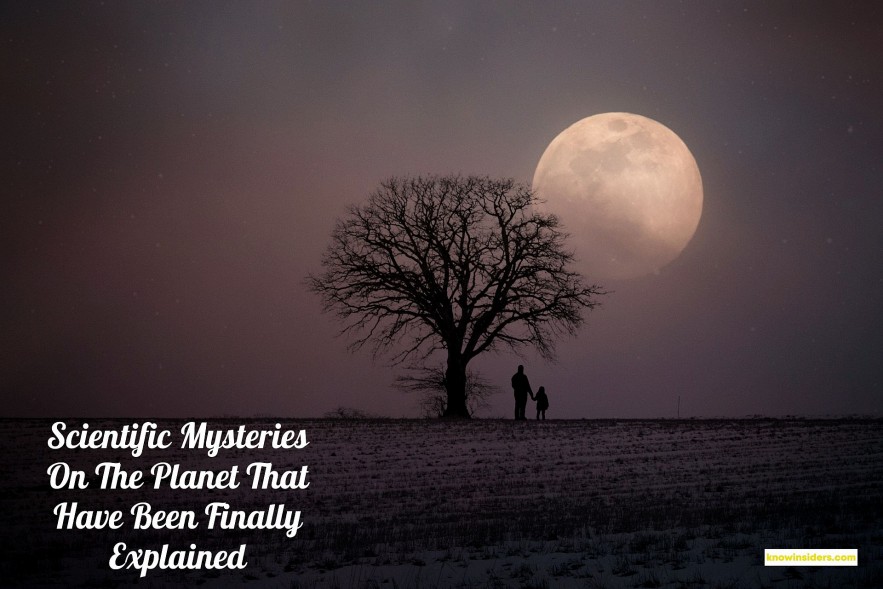 |
| The Scientific Mysteries That Have Been Finally Explained - Photo KnowInsiders |
| Contents |
The world is always full of fascinating mysteries that have long remained unanswered. However, in recent years, many puzzles that have challenged humanity for so long have finally had their answers found.
1. What direction does Earth's center spin?
Scientists have solved a 300-year-old riddle about which direction the center of Earth spins. Earth's inner core, made up of solid iron, 'superrotates' in an eastward direction -- meaning it spins faster than the rest of the planet -- while the outer core, comprising mainly molten iron, spins westwards at a slower pace.
Earth's inner core, made up of solid iron, 'superrotates' in an eastward direction -- meaning it spins faster than the rest of the planet -- while the outer core, comprising mainly molten iron, spins westwards at a slower pace.
Although Edmund Halley -- who also discovered the famous comet -- showed the westward-drifting motion of Earth's geomagnetic field in 1692, it is the first time that scientists have been able to link the way the inner core spins to the behavior of the outer core. The planet behaves in this way because it is responding to Earth's geomagnetic field.
The findings, published in Proceedings of the National Academy of Sciences, help scientists to interpret the dynamics of the core of Earth, the source of our planet's magnetic field.
In the last few decades, seismometers measuring earthquakes travelling through Earth's core have identified an eastwards, or superrotation of the solid inner core, relative to Earth's surface.
 |
| Earth's center spin |
"The link is simply explained in terms of equal and opposite action," explains Dr Philip Livermore, of the School of Earth and Environment at the University of Leeds. "The magnetic field pushes eastwards on the inner core, causing it to spin faster than the Earth, but it also pushes in the opposite direction in the liquid outer core, which creates a westward motion."
The solid iron inner core is about the size of the Moon. It is surrounded by the liquid outer core, an iron alloy, whose convection-driven movement generates the geomagnetic field.
The fact that Earth's internal magnetic field changes slowly, over a timescale of decades, means that the electromagnetic force responsible for pushing the inner and outer cores will itself change over time. This may explain fluctuations in the predominantly eastwards rotation of the inner core, a phenomenon reported for the last 50 years by Tkalčić et al. in a recent study published in Nature Geoscience.
2. Where did the Wow! Signal come from?
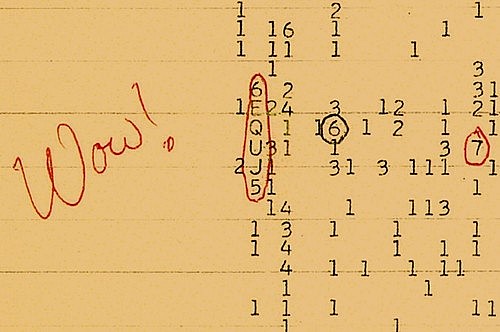 |
In 1977, the sound of extraterrestrials was heard by human ears for the first time — or so people at the time thought. The Wow! Signal was detected by astronomer Jerry Ehman using Ohio State University’s Big Ear radio telescope. It is a radio signal detector that, at the time, was pointed at a group of stars called Chi Sagittarii in the constellation Sagittarius.
When scanning the skies around the stars, Ehman captured a 72 second burst of radio waves: He circled the reading and wrote "Wow!: next to it, hence the signal's name. Over the last 40 years, the signal has been cited as evidence that we are not alone in the galaxy. Experts and laypeople alike believed that, finally, we had evidence of alien life.
However, Professor Antonio Paris, of St Petersburg College, has now discovered the explanation: A pair of comets. The work was published in the Journal of the Washington Academy of Sciences.
These comets, known as 266P/Christensen and 335P/Gibbs, have clouds of hydrogen gas millions of kilometers in diameter surrounding them. The Wow! Signal was detected at 1420MHz, which is the radio frequency hydrogen naturally emits. Notably, the team has verified that the comets were within the vicinity at the time, and they report that the radio signals from 266/P Christensen matched those from the Wow! signal.
3. Where are the teeth of the twisted-tooth shark located?
The helicoprion is a shark-like fish with an oddly twisted jaw. The first fossil of this species was discovered in 1899, but an extremely special part of the fossil is that it has a strange spiral jaw. Scientists have wondered which part of the body these razor-sharp serrated teeth belong to? Since then, many predictions have been made, but none have been conclusively proven. It can originate anywhere: upper jaw, lower jaw, tail…. If you search images for "helicoprion" nearly all of the images you will find depict a spiral skeleton of teeth curving downward from the mandible.
After using high-quality images produced by CT X-ray machines and creating a 3D model of the species' head, they discovered that the teeth of this species lie completely inside the mouth, acting as a "house". tooth maker” at the end of the lower jaw.
READ MORE: Top 10 Countries in the World for Scientific Research 2023/24
4. Why do corals move?
 |
Jean-Baptiste Lamarck was one of the first scientists to study corals. And the question ‘Why do corals move?’ caused headaches for scientists, made him spend his life researching. It was not until infrared cameras developed that everything was clear.
After using several infrared cameras, the scientists found that some of these corals fluctuate up to 95% of the time. Using a special camera, they discovered that the coral's movements were to prevent water from escaping around the reef. They also found that oxygen levels in the water around the reef are kept low, in order to increase the efficiency of photosynthesis for the algae that the corals use as food.
5. How can sharks navigate?
Sharks have a special ability of navigation.
Seas and oceans are vast places, but sharks can navigate and go to different places with incredible precision. For example, great white sharks often travel between Hawaii and California. A trout shark that also swims from Alaska as far as the subtropical Pacific Ocean.
This is a mysterious phenomenon that scientists have been trying to explain for years. In the past, it was believed that sharks used scent signals combined with the earth's electromagnetic field to navigate. However, this hypothesis still has no solid evidence.
Finally, a recent study has indeed provided the answer.
 |
Scientists tested the theory that sharks use smell for navigation by experimenting on wild leopard-spotted sharks. They captured these sharks and brought them to another location 10km from their original habitat.
The sharks were equipped with tracking devices and half of them had cotton balls stuffed up their noses. When the sharks were released back into the water, the ones that weren't stuffed with cotton balls were able to easily find their way back to their habitats. Meanwhile, the ones that were stuffed with cotton balls began to lose their way and could not return.
 13 Biggest Evidences That Shows Mysterious Existence of Aliens In The Ancient Times 13 Biggest Evidences That Shows Mysterious Existence of Aliens In The Ancient Times |
6. What does Roger Williams Code mean?
 |
A team of scholars decrypted a secret language—and discovered the last known work of the American theologian.
A little, leather-bound book has been gathering dust and receiving little attention for more than a century in a gray stone library on the corner of Brown University's Main Green in Providence, Rhode Island. The 234-page quarto was older and more obscure than most of the other ancient and obscure books in the library. Its title page was missing, its tattered brown leather cover was blank, and its author was not identified. Every inch of the book's margins was covered with a variety of obscure symbols: What appeared to be a blend of Greek, Hebrew, and some totally original characters were scrawled in black ink. Who is the author? What do they say, then?
The lone clue was a message that was not signed and was attached to the book. It was dated November 11, 1817.
It read, in part, “The margin is filled with Short Hand Characters, Dates, Names of places &c. &c. by Roger Williams or it appears to be his hand Writing…. brot me from Widow Tweedy by Nicholas Brown Jr.”
Despite this intriguing reference to the man who founded Rhode Island and brought the idea of religious liberty to the New World, the book languished—until an offhand remark at a small lecture in 2010 led a team of Brown scholars and undergraduates to crack the code, confirm it was written in Roger Williams’ hand, and discover, this summer, his last known work of theology.
On a late fall day in 2010, Ted Widmer, then-director of Brown’s John Carter Brown Library, was giving a talk on Williams’ life and legacy to about 20 members of the Pembroke Club, a group of Brown alums. The attendees were “mostly people with either gray hair or no hair,” says Bill Twaddell, a retired diplomat and member of the library’s board of governors who sat in on the lecture.
At one point, Widmer (an occasional contributor to Slate) mentioned the book and the suspicion that Williams had authored the code in its margins. Twaddell’s ears perked up. Why not scan the code and let computers attempt to crack it?
With the help of Kim Nusco, the JCB’s manuscript librarian, Widmer and Twaddell began recruiting faculty from the fields of mathematics, computer science, comparative literature, and history. But 17th century penmanship triumphed over 21st century technology: The writing was simply too messy for a computer to make sense of.
Manually cracking the code was going to be a slog. The project didn’t neatly fall into any one field, and the academics recruited by Widmer, Twaddell, and Nusco had work of their own to worry about. They decided to give Brown’s undergrads a shot.
In the fall of 2011, two juniors and two seniors—students of history, American studies, and mathematics—signed on to tackle the code during the spring semester. But over winter break, one team member, Lucas Mason-Brown, decided to get a head start. (Full disclosure: Mason-Brown is a friend.)
Mason-Brown studied math and had a particular interest in cryptography. He began with a basic technique called frequency analysis. It relies on statistical truths—for example that e is the most common letter in the English language—to crack the kinds of simple ciphers one would expect from the Colonial era.
READ MORE: Top 10 Scariest Science Experiments In The World History
7. Secret of Namibian fairy circles
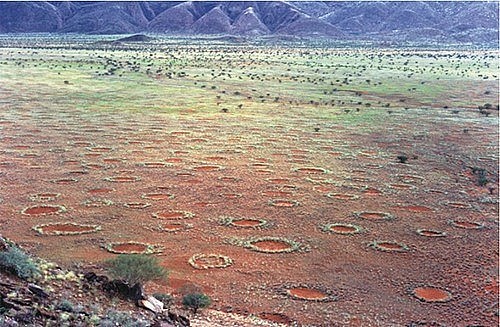 |
For over 50 years, ecologists have studied and debated the mystery of the Namib Desert’s “fairy circles,” circular patches, mostly barren of grass, that have spread across 1,100 miles in the arid grasslands of Southern Africa.
Despite their whimsical name, akin to the term “fairy rings” for circular patterns of fungi found in forested areas, there are no fairies at play here. Many theories have been put forth, but two have held the most merit. One theory has looked to blame termites for these dry patches, while the other considers the grasses’ evolution. Scientists have gone back and forth for decades, but a new study offers what may finally be evidence for a clear explanation.
A new study has thrown weight behind the self-organised plant theory, suggesting that the thirsty plants themselves might be the culprits.
Published in Perspectives in Plant Ecology Evolution and Systematics, the study draws on observations from two very high rainfall seasons, in 2020 and 2021.
The international team of researchers chased rain around the Namib desert over two years, taking soil moisture samples in the fairy circles at regular points after rainfall, and closely examining the grasses for termite damage.
8. Where did mysterious sound 'Bloop' come from?
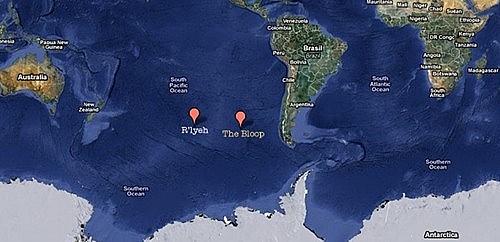 |
Researchers in the southern Pacific who were monitoring for underwater volcanic activity in 1997 captured a peculiar, potent, and extraordinarily loud sound. They captured a variety of instances of the noise using hydrophones, or underwater microphones, that were positioned more than 3,219 kilometers apart across the Pacific. In addition to being loud, the sound also had a peculiar quality that became known as "the Bloop."
Even though nearly 95% of the ocean hasn't been surveyed, ideas abound regarding the sound's origin, which scientists from NOAA's Pacific Marine Environmental Laboratory (PMEL) were eager to determine. Was the Bloop caused by submarine engines, fishing boat winches, enormous squids, whales, or some other unidentified sea creature?
As the years passed, PMEL researchers continued to deploy hydrophones ever closer to Antarctica in an ongoing effort to study the sounds of sea floor volcanoes and earthquakes. It was there, on Earth’s lonely southernmost land mass, that they finally discovered the source of those thunderous rumbles from the deep in 2005. The Bloop was the sound of an icequake—an iceberg cracking and breaking away from an Antarctic glacier! With global warming, more and more icequakes occur annually, breaking off glaciers, cracking and eventually melting into the ocean.
PMEL’s Acoustics Program develops unique acoustics tools and technologies to acquire long-term data sets of the global ocean acoustics environment, and to identify and assess acoustic impacts from human activities and natural processes on the marine environment.
9.Mysterious Disappearance of Amelia Earhart
Amelia Earhart is one of the most famous female aviators in history. On July 2, 1937, she suddenly disappeared while fulfilling her dream of flying around the equator. Since then, Amelia's mysterious disappearance has fascinated the world and inspired a host of conspiracy theories. People have also written and edited many movies about this famous girl.
However, in 2014, the International Corporation for Historic Aircraft Recovery (TIGHAR) found debris from an aluminum plane on an uninhabited island in the Nikumaroro region.
 |
After analysis, scientists believe that the debris almost certainly belongs to the two Earhart engines of the Lockheed Electra family of aircraft. In addition, metal plates have been mounted on the fuselage to replace the navigation window engraved with the name Miami. These details are completely consistent with the characteristics of the plane that Amelia was flying before her disappearance.
This is really a big breakthrough because since the time Amelia disappeared from 1937 until now, no evidence or traces have been found. The find also disproves fans' belief that Amelia crashed in the Pacific Ocean.
Instead, now people are redirected to believe that the crew ran out of fuel and were forced to land on Nikumaroro Island. After that, they lived in harmony with the people here and did not return.
 Fact-Check: Top 15 Mysteries Behind the Famous Artworks of All Time Fact-Check: Top 15 Mysteries Behind the Famous Artworks of All Time Thanks to modern technology and hundreds of years later,, we have discovered the "top secrets" hidden in these artworks such as painting, statue, etc. |
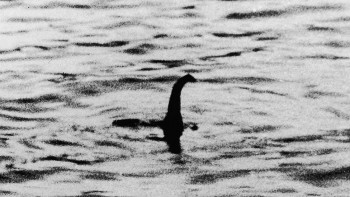 Top 6 Biggest Mysteries in the World History That Probably Never be Solved Top 6 Biggest Mysteries in the World History That Probably Never be Solved Not all mysteries will have an answer to it, and some will remain secret forever. Here are the world's biggest historical mysteries that have never ... |
 Top 7 Biggest Unsolved Mysteries on the Planet of All Time Top 7 Biggest Unsolved Mysteries on the Planet of All Time The Earth has many mysteries that make us extremely surprised while scientists have not been able to explain why. Let’s discover the most mysteries phenomena ... |
























